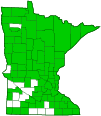great spangled fritillary
(Argynnis cybele)
Conservation • Description • Habitat • Ecology • Distribution • Taxonomy
|
|
||||||||||||||
Description |
Great spangled fritillary is a large, long-lived, fritillary butterfly. The wingspan is 2½″ to 3½″. The upperside of both wings are orange, orangish-brown toward the center, with black stripes, spots, and chevrons. On the outer margin there is a band (marginal band) of spots that have dark borders and are separated by heavy, dark veins. On most individuals all of the spots in this band on the forewing are orange and distinct, even at the wing tip. On some individuals the spots on the forewing band are brown or brownish tinged, especially toward the wing tip. The spots on the hindwing band are always orange, never black. There is a submarginal band of chevron-shaped black spots, a postmedial band of round black spots, and a medial band with black stripes. The wing veins of the middle portion of the forewing are bordered with black scales, making them appear thick. The underside of the forewing is mostly orange, orangish-brown toward the center, with an orangish-brown marginal band, black markings mirroring those on the upperside, and a few small white spots near the tip. The underside of the hindwing is reddish-brown, with a reddish-brown marginal band, a submarginal row of 7 silvery spots, a postmedial row of 6 large and 1 small silvery spots, and several silvery spots in the discal area. The two rows of spots are separated by a wide yellowish band. The yellowish band partially surrounds all of the postmedial spots. The eyes are brownish-orange. Females are larger and darker than males. The caterpillar is mostly black and up to 2¼″ long. The head is orange above, black below. Each abdominal segment has 5 branched, spike-like projections (scoli), one on the upper (dorsal) surface, and on each side one in the subdorsal area and one in the spiracular area. The lower half of all of the scoli are orange or tan. Mature caterpillars are found in May and June. |
Size |
2½″ to 3½″ wingspan |
Similar Species |
Aphrodite fritillary (Argynnis aphrodite) is a slightly smaller butterfly, with a wingspan no more than 3¼″. On most individuals all of the spots in marginal band of the upperside of the forewing, especially toward the wing tip, are black and indistinct, giving the appearance of a broad black border. The wing veins of the middle portion of the forewing are thin. There is an “extra” black spot at the base of the forewing. On the underside of the forewing the white spots at the tip are larger. The yellowish band separating the rows of silvery spots on the underside of the hindwing, if present, is narrow and does not surround any part of the large postmedial spots. The eyes are yellowish-green. Atlantis fritillary (Argynnis atlantis) is a smaller butterfly. The outer band of the upper hindwing is mostly black. |
Habitat |
Open woodlands, prairies, meadows, roadsides; prefers moist areas |
Ecology |
Season |
One brood; mid June to early September |
Behavior |
|
Life Cycle |
Males emerge in mid-June or July, 2 to 4 weeks before the females. Mating occurs in open areas in July. Females lay eggs on or near violets in late summer. Males die in October, females in October or early September. The eggs hatch in the fall. The newly hatched caterpillars overwinter, not feeding until the spring. |
Larva Hosts |
Violet leaves |
Adult Food |
Nectar of violets, thistles, and other large flowers. |
Distribution |
||
|
Sources 7, 21, 24, 27, 29, 30, 71, 75, 82, 83. Biodiversity occurrence data published by: Minnesota Biodiversity Atlas (accessed through the Minnesota Biodiversity Atlas Portal, bellatlas.umn.edu, 5/6/2025). |
|
| 5/6/2025 | ||
Occurrence |
||
Common and widespread |
||
Taxonomy |
|
Order |
|
Superfamily |
Papilionoidea (butterflies) |
Family |
|
Subfamily |
Heliconiinae (fritillaries and longwings) |
Tribe |
|
Subtribe |
Argynnina |
Genus |
Argynnis (greater firtillaries) |
Subgenus |
Speyeria |
A recent analysis of the tribe Argynnini (Simonsen et al., 2006), based on previously published morphological and new mitochondrial DNA data, resulted in a reclassification of the entire tribe. The study found no reason to split the “larger fritillaries” into a large number of genera, and proposed uniting them all in the genus Argynnis. The genus Speyeria is therefore included as a subgenus. A later study of mostly North American butterflies (Zhang, et al., 2020), based on genomic sequencing, supported moving Speyeria to a subgenus of Argynnis. The move has not been universally accepted. Zhang suggests that the reasons are historic, not scientific. Several generations of American naturalists were raised being accustomed to the name Speyeria and are less familiar with the name Argynnis, thus being resistant to abandoning Speyeria as a genus name. |
|
Subordinate Taxa |
|
Carpenter’s fritillary (Argynnis cybele carpenterii) Charlotte’s spangled fritillary (Argynnis cybele charlottii) Chermock’s fritillary (Argynnis cybele pseudocarpenteri) common great spangled fritillary (Argynnis cybele cybele) great spangled fritillary (Argynnis cybele eileenae) great spangled fritillary (Argynnis cybele novascotiae) Krautwurm’s fritillary (Argynnis cybele krautwurmi) Leto fritillary (Argynnis cybele leto) Letona fritillary (Argynnis cybele letona) Puget Sound fritillary (Argynnis cybele pugetensis) |
|
Synonyms |
|
Argynnis baal Argynnis bartschi Argynnis daphnis Speyeria cybele |
|
Common Names |
|
great spangled fritillary |
|
Glossary
Scolus
A spiny, branched projection from a larval body wall, the branches terminating with a single stiff, hair-like or bristle-like tip.
Spiracle
A small opening on the surface of an insect or arachnid through which it breathes.
Visitor Photos |
||
Share your photo of this insect. |
||
This button not working for you? |
||
Dan W. Andree |
||
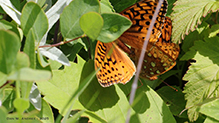 |
||
Great Spangled mating... |
||
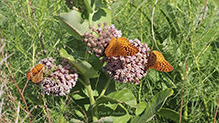 |
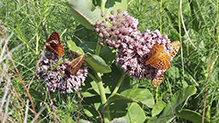 |
|
Great Spangled Fritillary Butterflies... At the Twin Valley Prairie SNA. Late June 2020. They seemed to be the most abundant larger or noticeable species at that time. Filmed and photographed them… These images are from 4k video. |
||
Gregory Gilman |
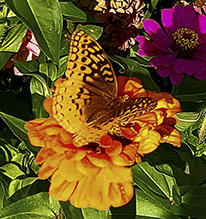 |
The Great Spangled Frittilary !! Check out this rare royalty for Rochester Mn! First time for us! |
N. G. Carlson |
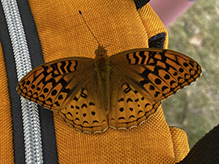 |
Anita Hall |
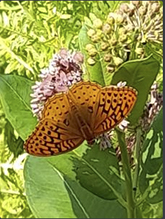 |
Enjoying the milkweed in my rain garden. |
Mike Poeppe |
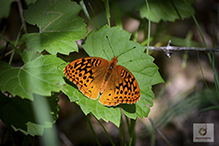 |
Luciearl |
||
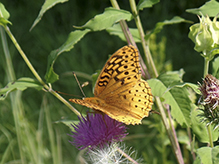 |
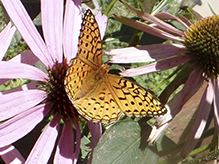 |
|
Margot Avey |
||
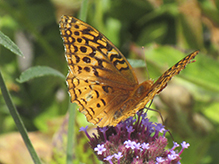 |
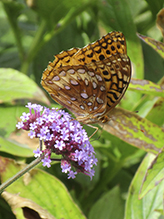 |
|
Tom Baker |
||
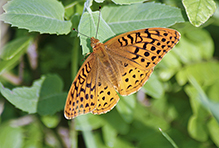 |
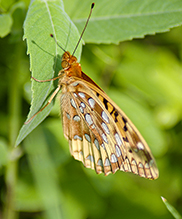 |
|
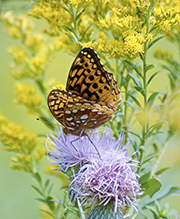 |
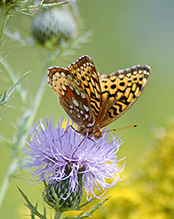 |
|
MinnesotaSeasons.com Photos |
||
Upper side |
||
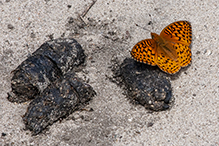 |
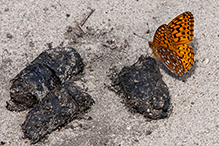 |
|
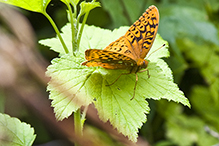 |
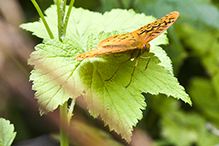 |
|
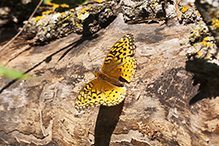 |
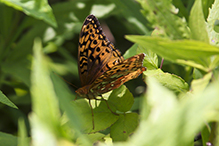 |
|
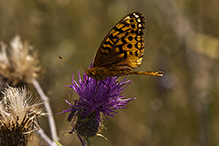 |
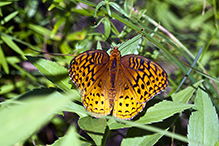 |
|
Underside |
||
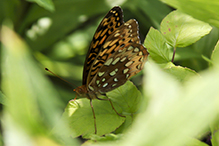 |
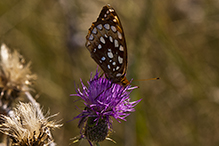 |
|
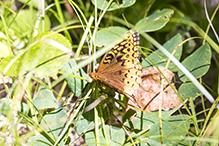 |
||
Krautwurm’s fritillary (Argynnis cybele krautwurmi) at Scenic State Park |
||

Slideshows |
Great Spangled Fritillary Butterfly |
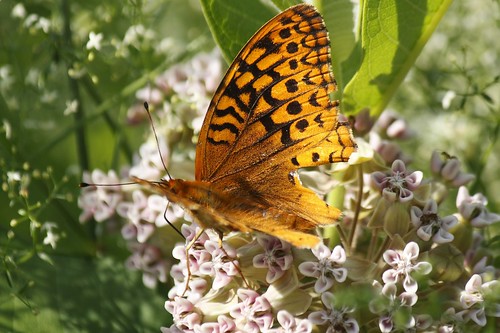
|
About
Argynnis cybele for info: http://www.butterfliesandmoths.org/species?l=1675&chosen_state=50*Vermont |
Argynnis cybele (Great Spangled Fritillary) |
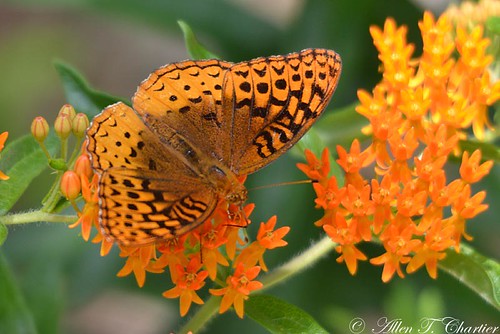
|
Great Spangled Fritillary |
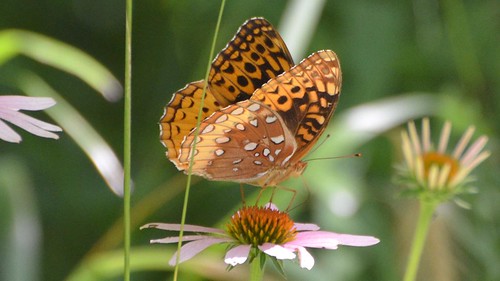
|
Great Spangled Fritillary |
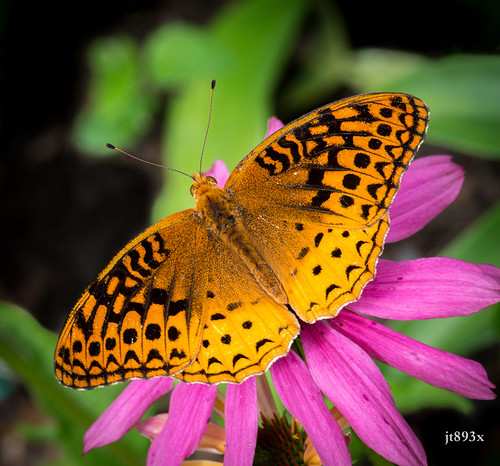
|

Visitor Videos |
||
Share your video of this insect. |
||
This button not working for you? |
||
Dan W. Andree |
"Fritillary Butterflies" filmed by Dan W. Andree |
About
I filmed some fritillary butterflies during the past years and decided to put together a short video now in 2025 showing 4 different kinds. Just some basic general information and images of the Meadow, Variegated, Great Spangled and Regal Fritillary. There is readable text at the beginning and on and off text and narration throughout the video. |
Other Videos |
||
Great Spangled Fritillary August 31, 2013 |
About
Published on Sep 2, 2013 Great Spangled Fritillary (Argynnis cybele) Nectaring Joe-Pye Weed (Eupatorium maculatum), Sherborn Power Line, near Fessenden Field, Western Avenue, Sherborn, Massachusetts, Saturday morning, August 31, 2013, 11:03 AM / 11:44 AM - Canon PowerShot SX50 HS MVI_44363 / MVI_44386; 37 min. |
Great Spangled Fritillary nectaring |
About
Uploaded on Aug 1, 2011 Great Spangled Fritillary (Argynnis cybele) , 7/15/11, Maryland http://www.geochembio.com/biology/organisms/butterfly/ |
Life Dances on the Smith River |
About
Uploaded on Aug 23, 2009 Along the banks of the Smith River, the nectar of sweet Joe-Pye-weed (Eupatorium purpureum) attracts and feeds a great spangled fritillary butterfly (Nymphalidae: Argynnis cybele cybele) Timothy Seaman performs "Samhradh, Samhradh (Trad.)", playing both hammer dulcimer and flute in this haunting melody from his album, "Wayfaring Stranger". This link to his website can help you to listen to more of his compositions. |
Great Spangled Fritillary butterfly feeding on purple coneflowers |
About
Uploaded on Jul 7, 2011 http://www.InBloomThisWeek.com A Great Spangled Fritillary butterfly feeding on purple coneflowers (Echinacea) in slow motion video |
Nectaring Great Spangled Fritillaries - Clermont County, Ohio, USA |
About
Uploaded on Jun 9, 2010 Great Spangled Fritillaries nectaring on Common Milkweed in Clermont County, Ohio, USA. June 4, 2010. |

Visitor Sightings |
||
Report a sighting of this insect. |
||
This button not working for you? |
||
| Dan W. Andree 7/17/2025 |
Location: Frenchman’s Bluff SNA Great Spangled mating... |
 |
| Gregory Gilman 8/10/2023 |
Location: Rochester, Mn Check out this rare royalty for Rochester Mn! First time for us! |
 |
| N. G. Carlson 6/19/2023 |
Location: Ramsey, MN |
 |
| Mike Poeppe 6/24/2022 |
Location: just west of Houston, MN |
 |
| Luciearl 8/1/2019 |
Location: Fairview Twp, Cass County |
 |
| Margot Avey 8/20/2020 |
Location: Noerenberg Memorial Gardens - Three Rivers Park District, Crystal Bay, Lake Minnetonka MN |
 |
| Luciearl 8/1/2019 |
Location: Cass County |
 |
MinnesotaSeasons.com Sightings |
||

Created: 10/20/2009 Last Updated: © MinnesotaSeasons.com. All rights reserved. |
